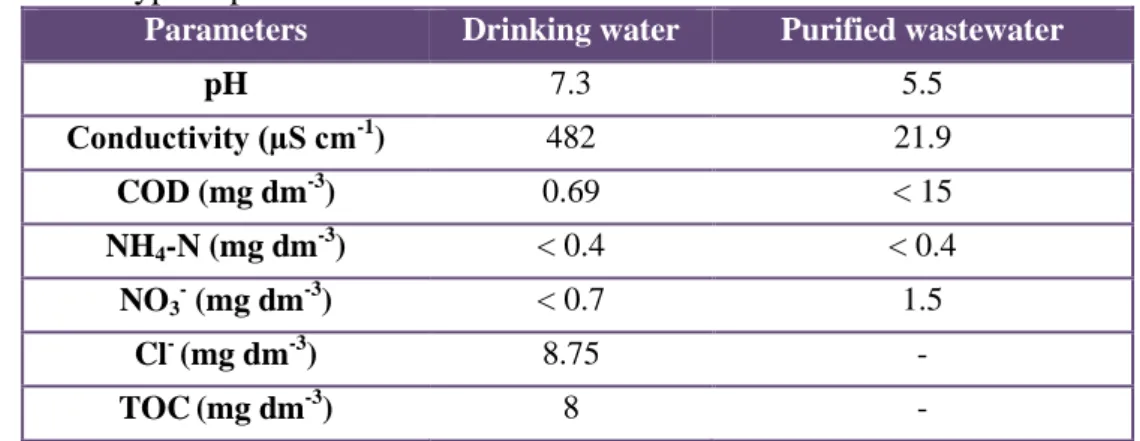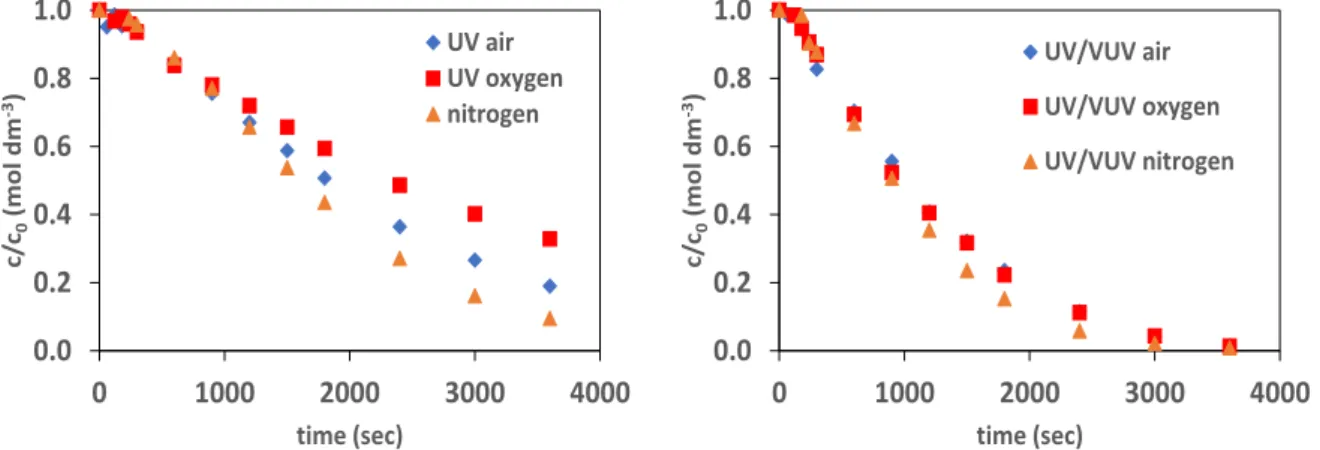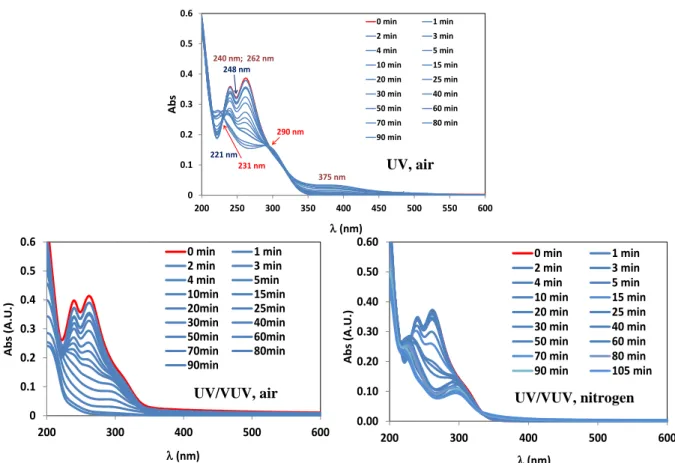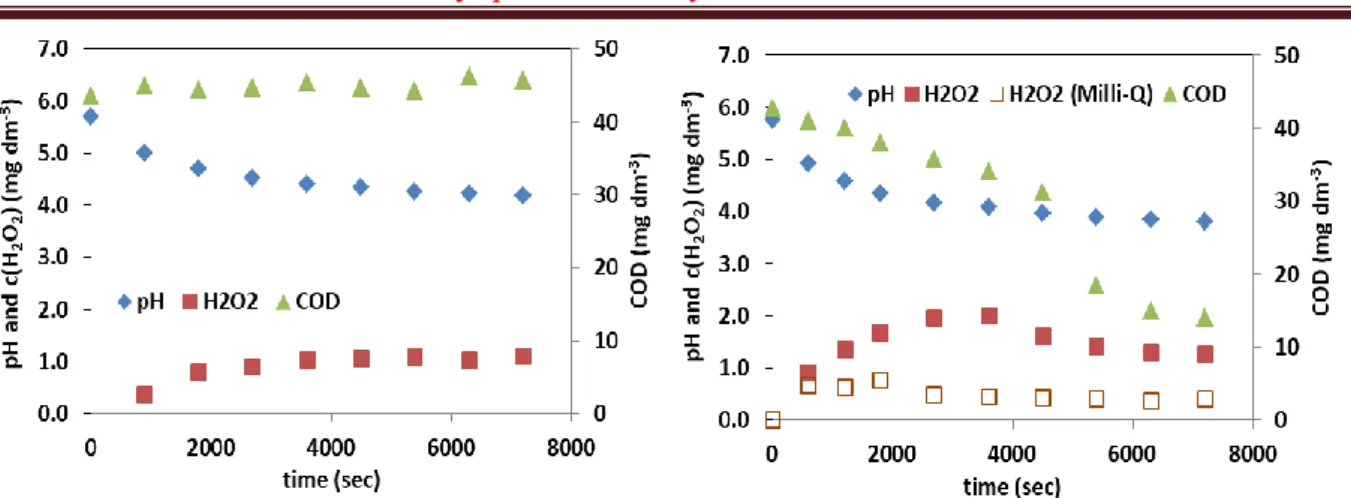PROCEEDINGS OF THE
25 th International Symposium
on Analytical and Environmental Problems
Szeged, Hungary
October 7-8, 2019
25th International Symposium on Analytical and Environmental Problems
Edited by:
Tünde Alapi István Ilisz
Publisher:
University of Szeged, H-6720 Szeged, Dugonics tér 13, Hungary
ISBN 978-963-306-702-4
2019.
Szeged, Hungary
25th International Symposium on Analytical and Environmental Problems
The 25
thInternational Symposium on Analytical and Environmental Problems
Organized by:
SZAB Kémiai Szakbizottság Analitikai és Környezetvédelmi Munkabizottsága
Supporting Organizations
Institute of Pharmaceutical Analysis, University of Szeged
Department of Inorganic and Analytical Chemistry, University of Szeged Institute of Environmental Science and Technology, University of Szeged
Hungarian Academy of Sciences
Symposium Chairman:
István Ilisz, DSc
Honorary Chairman:
Zoltán Galbács, PhD
Organizing Committee:
István Ilisz, DSc associate professor
University of Szeged, Institute of Pharmaceutical Analysis ilisz@pharm.u-szeged.hu
Tünde Alapi, PhD assistant professor
University of Szeged, Department of Inorganic and Analytical Chemistry
alapi@chem.u-szeged.hu
25th International Symposium on Analytical and Environmental Problems
UV AND UV/VUV PHOTOLYSIS OF SULFAMETHAZINE
Ilaria Minzini1, Máté Náfrádi2, Luca, Farkas2, Dalma Fuderer2,Tünde Alapi2
1University of Padova, Department of Chemical Sciences, Via Marzolo, 1-35131, Padova, Italy
2Department of Inorganic and Analytical Chemistry, University of Szeged, H-6720 Szeged, Dóm tér 7, Hungary
e-mail: alapi@chem.u-szeged.hu
Abstract
In this work, UV and UV/VUV photolysis of sulfamethazine was investigated.
Sulfamethazine is one of the most often used antibioticum, wich can be detected in soils and surface water. The applied light sources were low-pressure mercury vapour lamps having identical geometry and electric parameters. One of the light sources amitts only 254 nm UV light, while the other one emitts both 254 nm UV and 185 nm VUV light.
Both UV and UV/VUV photolysis were found to be effective in the transformation of sulfamethazine, but COD decrease was observed only in the presence of VUV light. In parallel with the transformation of sulfamethazine, H2O2 formation was detected. Its concentration reached higher value in the case of UV/VUV than in UV radiation.
Spectrophotometric measurements suggested that dissolved oxygen has effect on the formed interemdiates in both UV and UV/VUV photolysis.
Transformation rates were determined in purified wastewater and tap water and compared to the values determined in Milli-Q water. Results showed that these mild matrices decreased the transformation rates in both cases. The inhibition effect in more pronounced in the case of UV photolysis.
Introduction
Antibiotics are a main and essential resource for the treatment of multiple types of infectious diseases, both in humans and animals. However, in recent years its widespread use, both to treat diseases and to promote growth the efficiency of food has generated serious concerns, mainly due to the increase in the diversity and dispersion of organisms resistant to these compounds. The amount of antibiotics sold for animals destined to food is approximately four times greater than for human use, whereas the world consumption of antibiotics is estimated an increase of 67% for the year 2030. Among antibiotics, sulfonamides are one of the most widely used in veterinary medicine. In 2014, sulfonamides were the third group of veterinary antibiotics most used in Europe, reaching 11% of the total sale of antibiotics. Its extensive use is due to their broad spectrum against most Gram-positive organisms and many Gram- negative organisms. 1,2
25th International Symposium on Analytical and Environmental Problems
Sulfonamides are poorly absorbed on soils. In the specific case of sulfonamides, they are considered the most mobile antibiotics, and easily transported to water bodies. In fact, these compounds are frequently detected in surface waters, groundwater and in different types of crops. Therefore, the study of the degradation of sulfonamides, both chemical and biological, is crucial to establish the environmental impact of these compounds.
Experimental
Two low-pressure mercury vapour (LP) lamps (GCL307T5/CELL and GCL307T5VH/CELL, 227 mm arc length, both produced by LightTech) were used for UV (254 nm) and UV/VUV185 nm (254 nm/185 nm) irradiations. The parameters (electrical power 15 W and UVC-flux power 4.3 W) of both lamps were the same. The envelope of the UV lamp emitting at 254 nm was made of commercial quartz, while the UV/VUV185 nm lamp’s envelope was made of synthetic quartz to be able to transmit the VUV185 nm photons. The flux of 254 nm photons (5.97 × 10−6 molphoton s−1) of both lamps (UV and UV/VUV185 nm) was determined by ferrioxalate actinometry and found to be the same. The relative radiant power efficiency of the 185 nm VUV light is about 6 - 8% compared to the 254 nm emission.
The reactor geometrical parameters were adapted to the lamp’s parameters: 30 mm internal diameter and 320 mm long. Thus the optical path length was 10 mm. The total volume of the treated solution was 500 mL. The aqueous solution was continously boubled with oxygen, air or nitrogen to set various dissolved oxygen concentration. The gas was boubled through the solution using a gas dispersing system. Gas bubbling was started 20 min before the measurement.
Sulfamethazine (Sigma-Aldrich, 99.9%) solutions (500 mL) with initial concentration 1.0 × 10−4 mol L−1 was made in ultrapure MILLI-Q water (MILLIPORE Milli-Q Direct 8/16).
Separation of the aromatic components in the treated solutions was performed by Agilent 1100 type HPLC equipped with diode array detector (DAD) using LiChroCart® (250-4, RP- 18, 5 μm) reverse-phase column.
The COD measurments were performed using LCK1414 (Hach) colorimetric cuvette test with a 5.0-60.0 mg dm-3 measuring range and a DR2800 spectrophotometer. The concentration of H2O2 was measured with a cuvette test by Merck, with a 0.015 - 6.00 mg dm-3 measuring range. The NO3- concentration was determined by using colorimetric cuvette test provided by Merck, with a 0.4-111 mg dm-3 range. For the experiments in various matrices, drinking water from Szeged (Hungary), and industrial wastewater (purified with reverse osmosis) has been choosen. The main analytical parameters available for both matrices are compared in Table 1.
Table 1. Typical parameters of the used matrices that could affects water treatment Parameters Drinking water Purified wastewater
pH 7.3 5.5
Conductivity (µS cm-1) 482 21.9
COD (mg dm-3) 0.69 < 15
NH4-N (mg dm-3) < 0.4 < 0.4 NO3
- (mg dm-3) < 0.7 1.5
Cl- (mg dm-3) 8.75 -
25th International Symposium on Analytical and Environmental Problems
Results and discussion
Comparing the transformation rate of sulfamethazine in UV and UV/VUV radiated solutions, we could observed that the presence of VUV strongly enhanced the transformation rate opposite that it has a quite low intensity comparing to the UV light intensity. In UV radiated solution the direct photolysis of sulfamethazine takes place, its efficiency depends on the molar absorbance of the target substance at 254 nm and quantum yield of its transformation.
In VUV radiated aqueous solution, the 185 nm VUV light is absorbed by water and results in the formation of reactive species, namely hydrogen radical (H), hydroxyl radical (HO) and with lower yield hydrated electron (eaq-) 3-6.
H2O + hv (<190 nm) H• + HO• Φ(HO•) = 0.33 (1)
H2O + hv (<200 nm) {e-, H2O+} + H2O {e-, H2O+} + (H2O) eaq- + HO• + H3O+ (2) Φ(eaq-
) = 0.045 – 0.05
Thus, the transformation of sulfamethazine in UV/VUV irradiated solution can take place by two different ways: direct UV photolysis and radical based reactions. The relative contribution of the radical based reaction seems to be similar to that of direct UV photolysis, since the transformation rate determined in UV/VUV irradiated solution is about two times higher than that determined in UV radiated one.
Figure 1. Relative concentration of sulfamethazine versus time of irradiation in the case of UV and UV/VUV photolysis
The effect of dissolved oxygen concentration on the transformation rate was investigated at 1.0×10-4 M initial concentration. The H• and e-aq, reacts with dissolved oxygen and produce by this way a less reactive HO2•
and O2•-
radicals. Opposite that, highly reactive species are eliminated by this way, oxygen generally has a positive effect on the transformation of organic substances because of the formation of peroxyl type radicals 4-8. Although, a positive effect of oxygen was expected in both cased, using UV photolysis, the transformation rate was slightly decreased with increase of the dissolved oxygen concentration after the first period. This can be explained by the formation of various intermediates, having different absorption at 254 nm and able to competes for 254 nm photons with sulfamethazine. At the same time, the effect of dissolved oxygen in UV/VUV irradiated solution was found to be
0.0 0.2 0.4 0.6 0.8 1.0
0 1000 2000 3000 4000
c/c0(mol dm-3)
time (sec) UV/VUV air UV/VUV oxygen UV/VUV nitrogen
0.0 0.2 0.4 0.6 0.8 1.0
0 1000 2000 3000 4000
c/c0(mol dm-3)
time (sec)
UV air UV oxygen nitrogen
25th International Symposium on Analytical and Environmental Problems
The changing of the absorbance of the solutions was followed by taking spectra of the samples. There was no difference between the spectra series taken in air and nitrogen saturated UV irradiated solutions, while both of the shape of spectra and the changing of absorbance at characteristic wavelengths showed significant difference in the case of UV/VUV photolysis, and depended on the dissolved oxygen concentration. The observed effect of dissolved oxygen is most probably can be explained by the possibility of peroxyl radical formation.
Figure 2. Spectra of sulfamethazine solutions radiated with UV and UV/VUV light
The pH decreased during both treatments, probably because of the formation of organic acids due to the fragmentation and oxidation processes. Althougt oxygen has no effect on the initial transformation rates, it has significant effect on the COD decrease and H2O2 formation. Using UV photolysisi the decrease of the COD value is negligible, which suggest that, hardly oxidable intermediates form in this case. Using UV/VUV photolysis the COD decrease is no mere than 25% during the time required for the transformation of sulfamethazine. After this periode the COD decrease became faster and reach almost 70% by the end of tretament (120 min). Withouth dissolevd oxygen there is no COD decrease proving the essential role of oxygen in the mineralization.
H2O2 forms only in the prsence of dissolved oxygen. After a slight increase, the H2O2 concentration became constant in UV radiated solution. In the presence of VUV light the H2O2 concentration is higher and its formation is faster. H2O2 concentration reches highest value, when sulfamethazine decomposed completely. After that decrease slowly and getting
0 0.1 0.2 0.3 0.4 0.5 0.6
200 250 300 350 400 450 500 550 600
Abs
(nm)
0 min 1 min
2 min 3 min
4 min 5 min
10 min 15 min 20 min 25 min 30 min 40 min 50 min 60 min 70 min 80 min 90 min
221 nm 231 nm 240 nm; 262 nm
248 nm
375 nm 290 nm
0 0.1 0.2 0.3 0.4 0.5 0.6
200 300 400 500 600
Abs (A.U.)
(nm)
0 min 1 min 2 min 3 min
4 min 5min
10min 15min
20min 25min
30min 40min
50min 60min
70min 80min
90min
0.00 0.10 0.20 0.30 0.40 0.50 0.60
200 300 400 500 600
Abs (A.U.)
(nm)
0 min 1 min
2 min 3 min
4 min 5 min
10 min 15 min 20 min 25 min 30 min 40 min 50 min 60 min 70 min 80 min 90 min 105 min UV, air
UV/VUV, air UV/VUV, nitrogen
25th International Symposium on Analytical and Environmental Problems
Figure 3. pH, COD and H2O2 concentration versus time of irradiation in aerated UV (A) and UV/VUV (B) radiated solutions
Transformation rates were determined in purified wastewater and tap water and compared to the values determined in Milli-Q water. Results showed that these mild matrices decreased the transformation rates in both cases. The inhibition effect in more pronounced in the case of UV photolysis.
Conclusion
Both UV and UV/VUV photolysis effective for the elimination of sulfamethazine from aqueous solutions
Dissolved oxygen has no significant effect on the transformation rate
VUV light having low intensity highly increase the transformation rate
COD decrease can be observed only in the case of combination UV and VUV photolysis
Acknowledgements
This publication was supported by the János Bolyai Research Scholarship of the Hungarian Academy of Sciences, and ÚNKP-19-3-SZTE-207andUNKP-19-4-SZTE-115,new national excellence programs of the Ministry for Innovation and Technology.
References
[1] I.T. Carvalho, L. Santos, Environ. Int. 2016. 94, 736–757.
[2] M. Biošić, M. Mitrevski, S. Babić, Environ. Sci. Pollut. Res. 2017. 24, 9802–9812.
[3] M.C. Gonzalez, E. Oliveros, M. Worner and A. Braun J Photochem and Photobiol C: 5 (3), 225–246. (2004)
[4] T. Oppenländer: Vacum-UV Oxidation, The H2O-VUV AOP, in book Photochemical Purification of water and air, Viley-VCH, 2003
[5] T. Alapi, K. Schrantz, E. Arany, Zs. Kozmér; Ed.: Mihaela I. Stefan, Advanced oxidation processes for water treatment : fundamentals and applications. IWA, 2018
[6] G. Heit, A. Neuner, P.-Y. Saugy, A. M. Braun; J. Phys. Chem. A 1998, 102, 5551-5561 [7] E. J. Hart, M. Anbar; Journal of Molecular Structure, 1970, 9, p. 486-486
[8] S. Al-Gharabli, P. Engeßer, D. Gera, S. Klein, T. Oppenlander, Chemosphere, 2016, 144, 811-5



